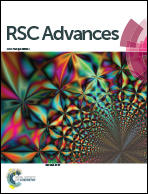Heterogeneous biochars from agriculture residues and coal fly ash for the removal of heavy metals from coking wastewater†
Abstract
While we have started down the path towards a global transition to a green economy, as with most things we began with the “low-hanging fruit,” such that increasingly difficult material and chemical conversions remain. Coking is one such example; it is unlikely that steel production will transition away from using coking coal anytime in the near future, such that coking wastewater remains a global environmental challenge. However, we can develop greener methods and materials to treat such waste. The present work demonstrates how wheat straw, an abundant agricultural residue, can be co-pyrolyzed and co-activated with coal fly ash to produce a high surface area biochar. Coal fly ash has previously been shown to promote devolatilization and deoxygenation of pyrolyzed biofuels. This work shows how coal fly ash increases microporosity as well as aromaticity of the surface functional groups, while decreasing carbonyl but preserving or only slightly decreasing ketones and carboxylic acids. CO2-activation of 5 and 10 wt% fly ash with wheat straw blends yields heterogeneous biochars with adsorption capacities upwards of 170 mgmetal gchar−1, with 5 wt% blends showing higher capacity and adsorption uptake rates than the 0 or 10 wt% blends. The adsorption of the four heavy metals ions (Ni2+, Co2+, Zn2+, and Mn2+) was chemical in nature, with cobalt preferentially adsorbing to the char surface. The overall adsorption rate is limited by an initial rapid uptake to fill available surface adsorption sites.



 Please wait while we load your content...
Please wait while we load your content...